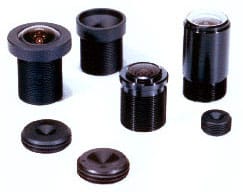High resolution lenses for machine vision — standard and custom lens design
Videographers Tout Benefits of CMOS Camera Technology
High Resolution Lenses for machine vision, instrumentation, inspection and vibration-sensitive applications. Standard and custom hi-res lens assemblies.
It has been said that film directors understand they’re more in the business of recording the light in which they are filming as much as they are photographing the actors on stage. Videography is the emerging technology of cinematography and it is all about the play of light that makes the difference between CCDs and CMOS technology.
CMOS means complimentary metal oxide semiconductor. CCD stands for charge-coupled device. These devices are chips that are embedded in a camera and they capture the light in the area in which the lens of the camcorder is focused. The signals captured are further processed inside the video recording device. A camera that is built with multiple image sensors use one chip per primary color (blue, green and red). The chips separately process the colors and combine them into a single signal onto a color video image. CMOS chips are less expensive than CCD and in these devices the chips are packaged as a dual image processor/image sensor all housed on a single chip.
During the manufacturing process a CMOS chip is made much like a traditional microchip and the CCD chip technology, which dates back to 1969, is a proprietary process.
This technology has evolved from the time when a film-based camera captured an image and then passed it through the lens and aperture. The image was recorded on a strip of film that contained light and color-sensing chemicals that were later developed. With video cameras, either with the CMOS or CCD image sensors, the image is captured and translated from the lens into the digital medium built into the camcorder used. When it comes to image quality, the CCD image far surpasses the images captured through the use of the CMOS chip technology.
Proper illumination is essential for videographers as they strive to capture images based on aesthetics and the minimization of video background noise. Regardless of where the videographer is working, the ambient light enters the camera through the lens after which it is then distributed to the internal chips whether CMOS or CCD. The size of the lens also impacts the quality of the image captured because the larger (or conversely the smaller) the lens, the amount of light that enters will impact the final product.
Video cameras with the CMOS chip technology allows for a smaller camera with batteries that last longer. Additionally, the heat emitted by the chips is lower. CCDs use more power and run hotter than CMOS technologies.
There are many variables that go into choosing a video camera, whether for professional or personal use. Making the decision on the CMOS versus the CCD technology will be only one of the criterions considered. Choosing the camera for its versatility, ease of use in changing lenses and any specialized applications should also be part of the decision-making process.
